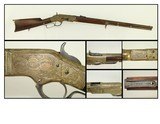 |
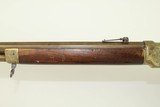 |
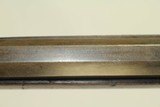 |
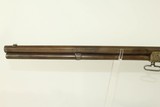 |
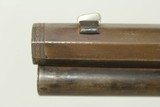 |
 |
 |
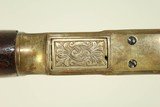 |
 |
 |
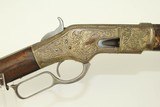 |
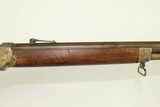 |
 |
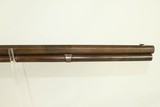 |
 |
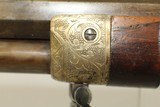 |
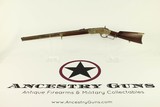 |
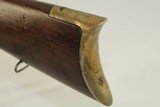 |
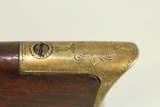 |
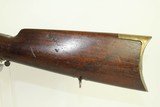 |
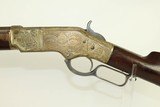 |
 |
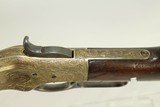 |
 |
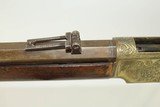 |

Antique Ulrich Engraved Winchester Model 1866 Lever Action Rifle Inscribed to Noble Spanish Family
Guns International #: 102666367 Seller's Inventory #: 10297
Category: Winchester Rifles - Model 1866 - Winchester Rifles - Antique Lever
Seller's Information
When emailing or calling sellers direct, please mention that you saw their listing on GunsInternational.com
Seller: AncestryGunsLLC
Company: Ancestry Guns LLC
Member Since: 11/3/16
State: Missouri
Zip: 65203
Country: United States
Phone: (314) 707-7373
International Phone: 314-707-7373
Platinum Seller
Number of Active Listings: 1485
Total Number of Listings: 30074
Seller: FFL Dealer
Return Policy: 3 day inspection and return policy on used guns.
Payment Types Accepted: Credit Card, Certified Check, Money Order
Description:
c1874 ENGRAVED Antique Winchester Model 1866 Lever Action Rifle .44 Henry
Inscribed to Aristocratic Officer in Chilean Military
Here we present an antique Engraved Winchester Model 1866 Third Model Lever Action Rifle, made circa 1874. This beautifully engraved rifle is truly a work of art. This Model 1866 rifle compares very well to several of the guns in The Winchester Book by George Madis, but perhaps most directly to two Model 1873s in particular, found on pages 138 & 148. Both of these saddle ring carbines have Spanish names (“SEBASTIAN ORTIZ” & “FELIPE CHAVEZ”) inscribed in the same font and in a wave-like format on the left sideplate inside three overlapping circles, just like this one has. The book only gives us one of their serial numbers (6595), which dates to 1875. As Madis notes for #6595, “scrolls of earlier models ’73 are very similar to those of the model ’66; production of the two models were concurrent and the same engravers worked on both. Very few guns were inscribed in any manner.” Madis attributes the engraving on the carbine on page 148 to the same engraver of the rifle on page 149, which is L.D. Nimschke. Other very compelling patterns in common with the aforementioned rifles and carbines happen to be Henry rifles (p.37 & 42) that are also the work of Nimschke. Not only do they share the style of scroll and punchdot background but especially the vertical transition at the very front of each sideplate with its serrated pattern (see also page 60 for a ’66 by Nimschke with the same serrated vertical transition).
This specimen features extensive and impressive engraving from butt plate to muzzle, sling swivels and a rear flip-up sight graduated out to 900 yards. It also has a very rare longer-than-standard barrel of 26”. Extensive engraving coverage of the receiver. Gold washed. The top of the butt plate, frame, elevator, breech end of the barrel and the muzzle end of the barrel are all engraved. Engraving is characterized by large scrolls and extensive punch dotting in the background. Vesica Piscis and Maltese Crosses are located all over the receiver and on the top of the butt plate. There is a single flower present, just behind the ejection port on top of the frame. The name “Antonio Errázuris Ortúzar” is prominent on the left side of the gun in three overlapping circles.
In this case, Don José Antonio Errázuris (Errázuriz) Ortúzar (1831-1891) was a Chilean aristocrat and young officer in the military, whose Errázuriz ancestors can be traced back to Navarre, Spain, an ancient Basque region, currently sitting on the modern border of France. The name Errázuriz goes back to at least the 12th century, when it is recorded that Pedro de Errázuriz was the personal tutor of King Alfonso IX (an interesting side note is that King Alfonso IX is responsible for one of the very first democratic meetings in Europe—the Cortes de León—, predating the first session of the Parliament of England and setting the stage for European democracy). The first Errázuriz in Chile was Francisco Javier Errázuriz y Larrain in the 1730s, who held a number of official titles. A total of three of his descendants would achieve the office of President in Chile in the country’s history, and many more have held other high offices and been influential in the former Spanish colonial holding. His younger brother Matías (1866-1953) would become a diplomat in Europe and prolific art collector whose exquisite home and collection is now Chile’s National Museum of Decorative Arts.
This rifle was probably a special gift or perhaps a status symbol ordered by Ortúzar himself, and would only have been a few years old during the War of the Pacific (1879-1883), the conflict that Chile eventually won against the alliance of Bolivia and Peru. Ortúzar was a junior officer in Artillery Regiment No. 2 during the Battle of Pisagua (2 November 1879), and the book Military History of the Battle of the Pacific ((Historia Militar de la Guerra del Pacífico Entre Chile, Perú y Bolivia (1879-18873)) details his actions during the amphibious landing and sheds some light on who he was:
While the boats advanced in two lines in the direction of all the Playa Blanca, a small boat approached armed with a machine gun. In it was the Ensign of No. 2 Artillery, Don José Antonio Errázuriz Ortúzar (the famous Canuto, as his comrades familiarly called him) with 8 artillerymen and 6 sailors; he approached the beach where he could see enemies behind the rocks on the shore, firing his machine gun and receiving without blinking the hail of bullets with which they answered him. The landing finished, the brave officer’s boat looked like a screen.
This battle is hailed as one of the first large modern amphibious assaults of the Industrial Age. Our protagonist is called “The Famous Knut” (which could be translated as “playboy”) and he seems to have a Devil-may-care valiance that may have saved the day for his own forces trying to make an amphibious landing by rowboat after the naval ships softened the beach for hours with their guns. He seems to have been promoted to Captain after this and we found his photograph (from 1881) in Chilean Equipment in the Pacific War 1879-1884 Vol 1 by Patricio Greve Moller.
This rifle is in near fine condition. All markings and engravings are clear. Serial numbers match, including the butt plate and the butt stock. Patina on the barrel and magazine tube is an even brown. Bore is in good condition for age—certainly shot but has good rifling remaining. Action is fine. Walnut stock shows handling and use as well. This was obviously not only a cherished work of art, but also a functional tool.
Own the original! This is a legitimate antique and not a reproduction.
Barrel is 26 inches in length.
Caliber: .44 Rimfire
Bore is in good condition and the mechanism is very good.
Overall condition as seen in photos.
Very Fast. Very Safe. FREE SHIPPING WORLDWIDE. Delivered directly to your door by express mail!
Guaranteed AUTHENTIC & Includes CERTIFICATE OF AUTHENTICITY.
ancestryguns
$75,000
#10297
Price: $75,000.00
Antique: Yes